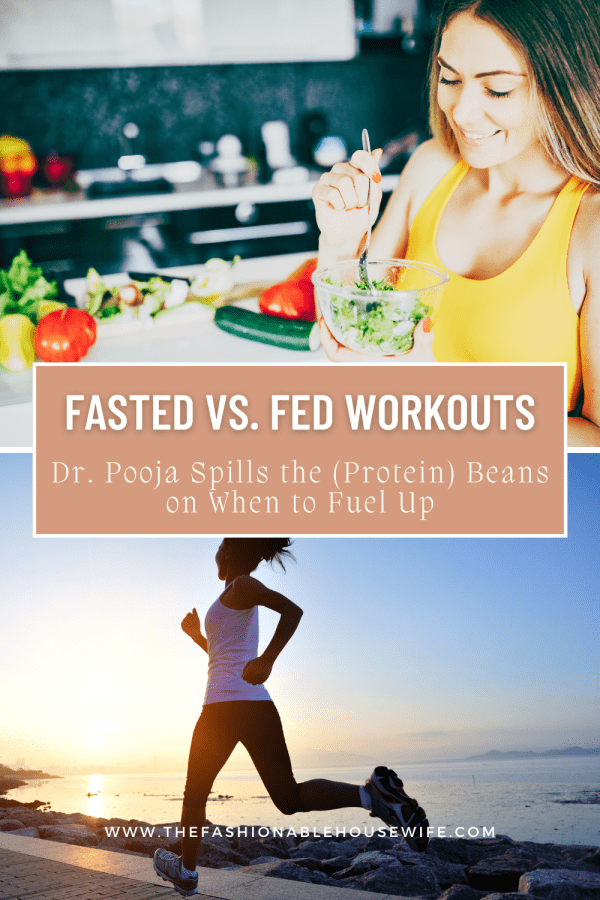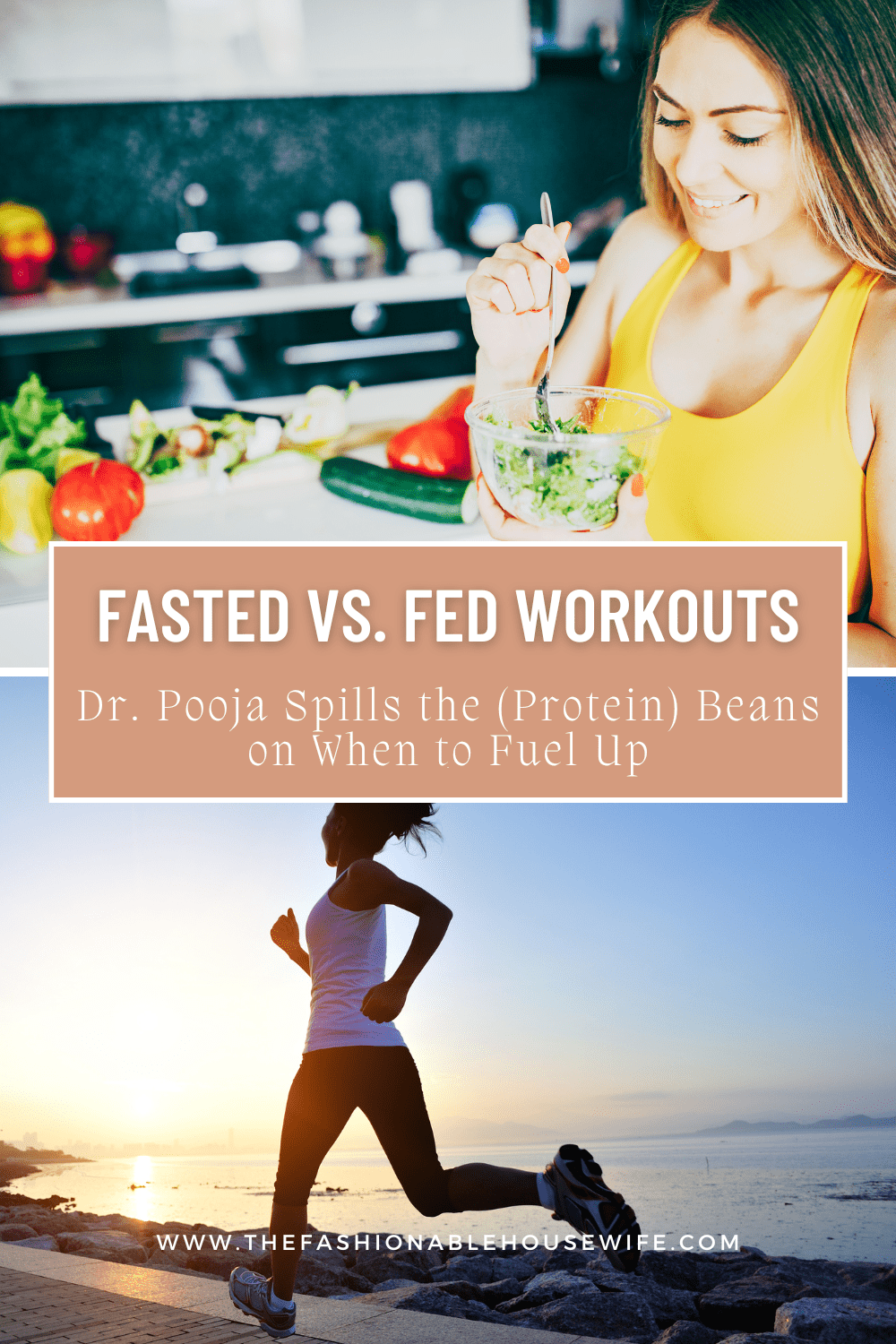Fasted vs. Fed Workouts: Dr. Pooja Spills the (Protein) Beans on When to Fuel Up

crolling through #fitspo these days can feel like wading through a swamp of conflicting “rules.” One swipe says you must crush your 5 a.m. spin class on an empty stomach to torch stubborn fat; the next insists you’ll vaporize muscle faster than you can say “branched-chain amino acids.” Even the coffee-only crowd and the rice-cake pre-workout squad can’t seem to agree on whether you’re fueling for gains or digging your own metabolic grave. It’s no wonder most of us stand in the kitchen at dawn, staring into the fridge and wondering, Do I eat the banana or let my stomach rumble for the sake of “discipline”?
That’s why I dialed up Dr. Pooja, a double board-certified powerhouse in Internal Medicine and Obesity Medicine, whose concierge practice blends longevity science, metabolic health, genetics, and mindset into one gloriously personalized roadmap. Translation: she’s the real deal when it comes to cutting through diet-culture noise and serving up evidence-based clarity.
So, I grilled her on the hottest topics—fasted vs. fed workouts, nutrient timing, individual genetics, and those stubborn myths that refuse to die. Below is our conversation with Dr. Pooja!
Our Interview with Dr. Pooja
1. Fasted vs. fed workouts—what’s really better for metabolism and fat burning?
Whether you should work out fasted or fed depends entirely on your goals, physiology, and the type of training you’re doing. If you’re focused on performance, muscle preservation, or long-term fat loss, working out without fuel is rarely the smartest choice. One of the most common fitness myths is that fasted workouts help you burn more fat. While you may oxidize more fat during the workout itself, that doesn’t necessarily translate to greater fat loss over time. It just reflects your body using fat as fuel because glycogen (carbohydrates) isn’t available. In fact, when you’re low on carbs, your body can start breaking down amino acids—especially branched-chain amino acids—to make up the energy gap, which puts lean muscle tissue at risk.
That also means you’re training with less power. You simply can’t lift as heavy, sprint as hard, or recover as well in a fasted state. For resistance training or any high-intensity effort, this often results in lower-quality workouts—and ultimately, fewer gains.
That said, fasted movement isn’t automatically bad. If you’re doing low-intensity activity—like a walk or light zone 2 cardio first thing in the morning—and it fits your schedule or feels good, that may be fine. But it shouldn’t be your default, and it should absolutely be adjusted if you’re seeing signs of fatigue, hormonal shifts, or poor recovery.
2. How important is the timing of nutrition around a workout for performance and recovery?
The timing of nutrition around your workouts plays a much bigger role than most people realize. Eating a mix of protein and carbs before exercise helps preserve muscle, supports stronger output, and prevents excessive cortisol release. Post-workout nutrition is just as important—particularly for people using GLP-1 medications, who may not feel hunger but still need to replenish their muscles to recover properly and avoid muscle loss.
3. Do individual health markers, genetics, and personal goals change the equation?
Individual health markers and genetics also change the equation. People with blood sugar instability, thyroid issues, adrenal dysfunction, or those navigating perimenopause or menopause often fare worse with fasted training. In my concierge practice, we take a personalized approach using labs, wearable data, stress levels, and fitness goals to find what actually supports metabolic health—not just what sounds good online.
4. What are the biggest myths and misconceptions about fasted training?
There are several persistent myths about fasted workouts that continue to mislead people. The first is that they’re superior for fat loss—but that’s only true if you’re looking at fat oxidation during a single session, not overall fat loss or body composition over time. The second is the idea that you need to “earn” your food by exercising first. That mindset often leads to under-fueling, poor recovery, and hormonal disruption—especially in women. A third myth is that fasted training somehow improves insulin sensitivity or longevity. While that might apply in niche settings like elite endurance athletes or under structured fasts, it’s rarely applicable to the average person lifting weights or doing HIIT. And finally, there’s the belief that fasted workouts are more “disciplined” or “clean”—a mindset rooted in diet culture, not physiology or performance science.
5. Any practical tips for optimizing workouts through nutrition?
The best approach is one that supports consistent movement, muscle preservation, and metabolic resilience. If you’re crashing mid-workout, unable to hit your usual intensity, or seeing your progress plateau, you’re likely not fueling enough—or not fueling smart. If you train early and can’t tolerate a full meal, even a small amount of protein and carbohydrates—like half a banana with nut butter or a scoop of protein blended with almond milk and berries—can help preserve lean mass and improve output. And don’t forget hydration. So many people skip both food and fluids, which puts them at risk for cramping, fatigue, and muscle breakdown. Hydration and electrolytes are foundational—not optional.
Train to build—not just to burn. And let your physiology, not a trend, drive your strategy.
Dr. Pooja
The Takeaway
Whether you’re a dawn-patroller or a post-work happy-hour lifter, fueling strategically—not starving heroically—is key. Our interview with Dr. Pooja shows you that your best workout plan is the one that honors your body’s biology, supports recovery, and keeps you lifting heavy (or power-walking proudly) for the long haul. Now go grab that snack and crush it!
About Dr. Pooja

Dr. Pooja Gidwani, MD, MBA, is a double board-certified physician in Internal Medicine and Obesity Medicine, offering concierge healthcare in Los Angeles, Beverly Hills, Manhattan Beach, Newport Beach, and across California via telehealth.
With a modern, science-backed, and deeply personalized approach, Dr. Pooja is redefining healthcare beyond the constraints of traditional medicine. Her work centers around longevity, weight optimization, and high-touch primary care, with a particular focus on metabolic health, personalized nutrition, genetics, and mindset.
Renowned for helping high-performing individuals take control of their health with clarity and confidence, Dr. Pooja specializes in GLP-1 therapy, optimizing biological age markers, addressing hormone imbalances, and achieving sustainable weight loss—finally delivering the results her patients have been searching for.

